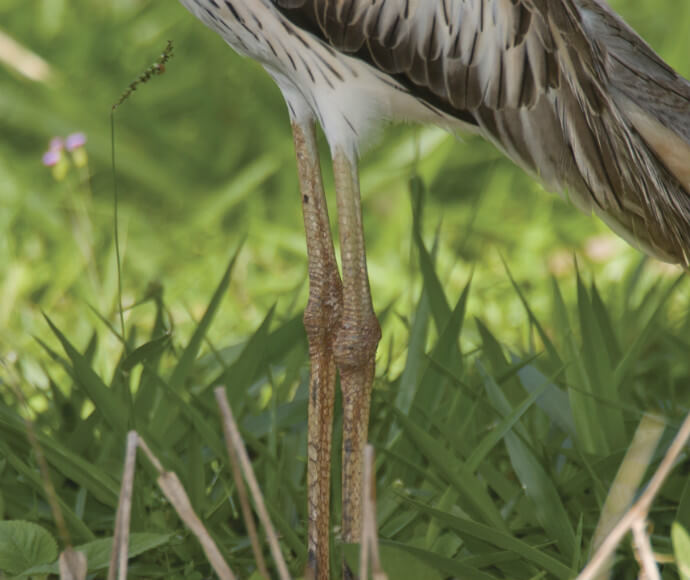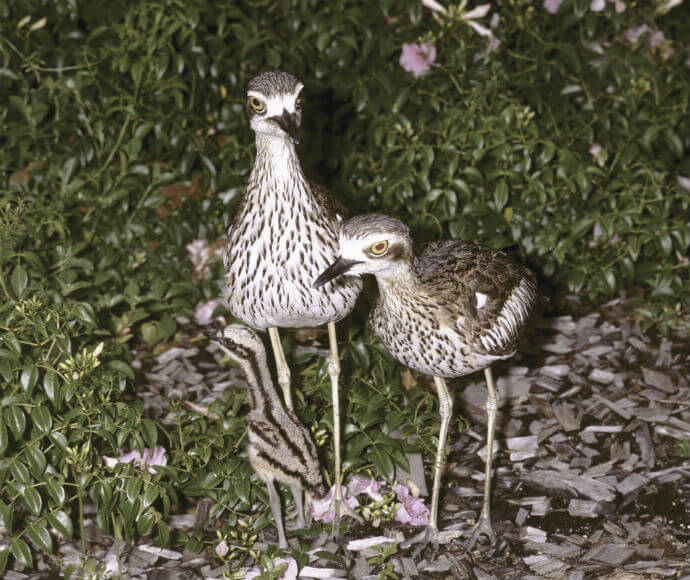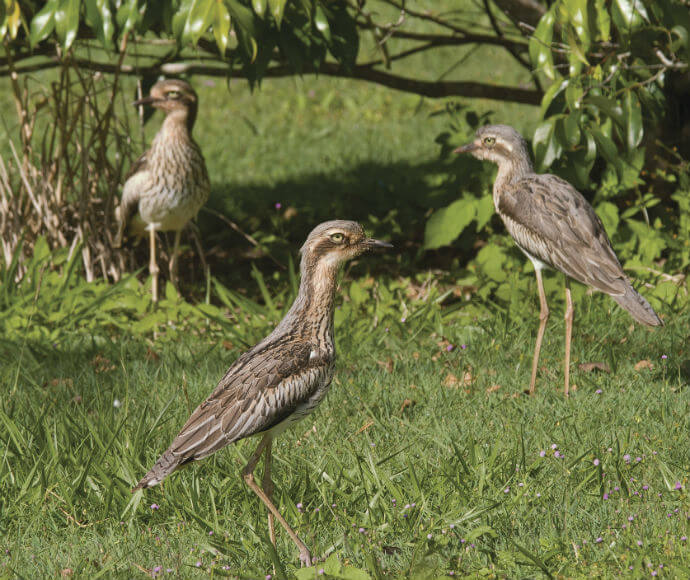What they look like
The bush stone-curlew is one of the most recognisable woodland bird species in New South Wales, with its gangly legs and large yellow eyes. It has a grey to light-brown back, marked with black blotches, buff and white underparts with dark streaks and a black band that runs from near its eye down to its neck. It is around 55 centimetres tall.
What they sound like
The bush stone-curlew's call is a loud, eerie, wailing 'weer-loo', which is mostly heard at night.
Where they live
The bush stone-curlew inhabits open forests and grassy woodlands. It is found in all states, except for Tasmania, and numbers have drastically declined in south-eastern parts of Australia. If you see one of these birds, count yourself lucky.
What they eat
Bush stone-curlews feed at night on insects and small vertebrates, including frogs, lizards, snakes and mice.
Breeding and life cycle
Bush stone-curlews breed throughout spring and summer, putting on an elaborate courtship dance involving standing with their wings outstretched, stamping their feet up and down, and keeping their tail upright.
If breeding is successful, the bush stone-curlew will create a nest on the ground in a scrape or small bare patch, laying up to 2 eggs around August to October and another 2 eggs around November to January.
The eggs are incubated for 30 days, a job which is shared by both parents. Once the chicks are born, they are immediately moved away from the nest and taught how to feed. Chicks cannot fly until they are around 9 weeks old, so they rely heavily on camouflage to protect them from predators during this time.
Threats
Threats to the bush stone-curlew include:
- predation by foxes and cats
- trampling of eggs by cattle
- clearance of woodland habitat for agricultural and residential development
- modification and destruction of ground habitat through removal of litter and fallen timber, introduction of exotic pasture grasses, grazing and frequent fires disturbance in the vicinity of nest sites.
Numbers have declined greatly over the last century. The bush stone-curlew is now endangered in New South Wales, and experts worry that in 10 or 20 years it will be too late to prevent the species from becoming extinct.
How you can help care for local bush stone-curlews
It is easy to make your local woodlands more suitable for bush stone-curlews. Here are some simple starting points:
- Leave fallen timber on the ground; this provides camouflage for the bird as well as areas for foraging.
- Keep grasses less than 15 centimetres high and fairly thin; pulse grazing is a useful method of managing grass height, but this should not be done if the birds are breeding.
- Conserve patches of trees on your property and allow some natural regeneration for the future; large patches and small clumps of trees suit the bush stone-curlew more than long, thin corridors of vegetation.
- Carry out fox baiting programs before and during the bush stone-curlew breeding season (August to January).
Protection of native animals
All native birds, reptiles, amphibians and mammals, but not including dingoes, are protected in New South Wales by the Biodiversity Conservation Act 2016.



